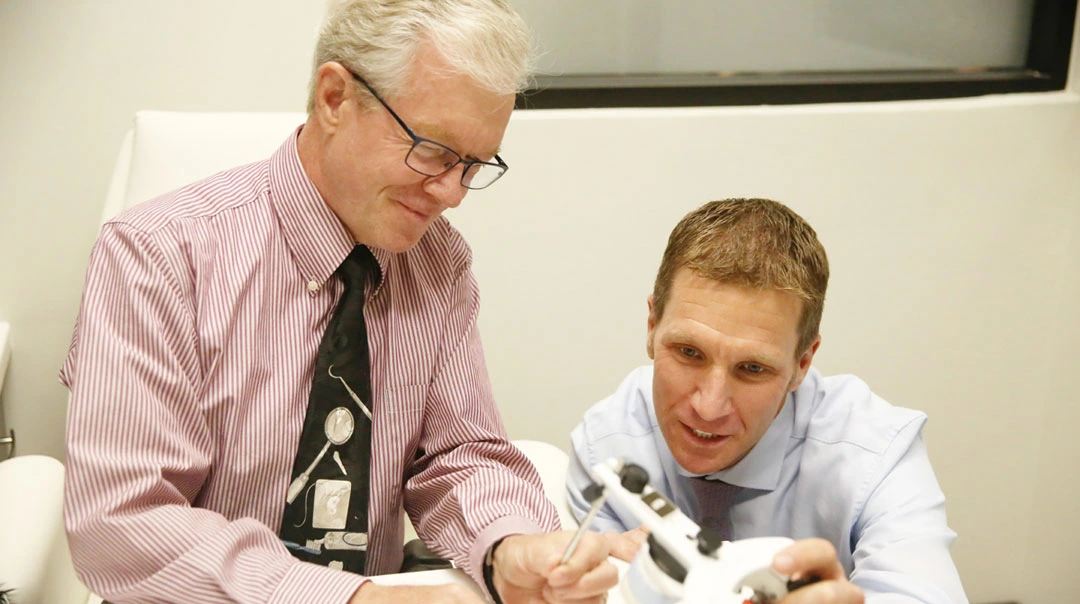
TMJ stands for “temporomandibular joint.” When people refer to TMJ, they are often referring to TMJ disorder. The chances are that if you’ve ever experienced pain upon opening or closing your mouth, you probably have experienced some form of this disorder. Don’t be too alarmed if your dentist has suggested that you have this disorder. Many people have symptoms at some point in their life. The good news is that it is usually manageable with some at-home self-care.
What Is The Temporomandibular Joint (TMJ)?
Your TMJ resembles a sliding hinge that connects your jawbone to your skull. You have two temporomandibular joints, one on the right side of your jaw and one on your jaw’s left side. Most people use their temporomandibular joints all day without even thinking about it. This joint aids in both opening and closing the mouth. It is a necessary joint in many daily functions such as eating, drinking, talking, yawning, singing, and even laughing.
Is TMD The Same As TMJ?
TMD stands for temporomandibular joint disorder, while TMJ technically stands for temporomandibular joint. Many people use the acronyms interchangeably, even though one refers to the joint itself while the other refers to the disorder of that joint.
What Are The Symptoms Of TMD?
Symptoms associated with the disorder of the temporomandibular joint may include one or many of the following:
-pain such as when chewing, clenching, or yawning
-limitation of movement when opening or closing
-clicking or popping noises from the joint
-tenderness on palpation of chewing muscles
-tension headaches
-ringing ears
-feeling like the teeth don’t meet together properly
What Is The Main Cause Of TMD?
The exact cause of a person’s TMJ disorder can be challenging to pinpoint. Many times the pain is a result of many factors. Some people can relate their TMD to an isolated time, such as a jaw injury. For many people, though, it can be a much slower progression. Genetics, arthritis, and bruxism (teeth grinding) are a few possible causes.
How Do I Know If I Have TMD?
Temporomandibular disorder is usually diagnosed based on the symptoms present. If you struggle with any of the symptoms listed above, you should schedule an appointment with your dentist. Your dentist will be able to do a thorough assessment of your mouth and jaw. They will probably check your teeth for wear, palpate your chewing muscles for tenderness, and monitor how your jaw moves when opening and closing. Gathering this information and talking through the symptoms you are experiencing will help them to make their diagnosis. A thorough exam will also help them know what can bring relief from TMD.
Can TMD Go Away On Its Own?
The pain and discomfort that can come with TMJ disorders are often temporary. For many people, the pain comes and goes. The good news is that most of the time, the pain and symptoms can be relieved with nonsurgical treatments and self-managed care. Care can look very different between two people experiencing TMJ disorders. Care suggested will be based on specific symptoms present as well as any identified factors leading to TMD. Here are some possible treatment options:
- Wear a nightguard to reduce clenching and grinding.
- Take over-the-counter pain relievers or anti-inflammatory medications.
- Use relaxation techniques to help relieve stress that may be causing tension in the joint.
- Chiropractic care has been found to help some people find relief from TMD.
- Injections to relax the jaw.
- Jaw Surgery, although this treatment option is scarce as many less invasive procedures usually work.
Pain can be annoying, especially when it occurs during everyday tasks like talking and chewing. If you find jaw pain interfering with your quality of life, you should see a dental professional. The sooner you get some answers on your jaw pain, the sooner you can get back to a pain-free life!



Leave a Reply